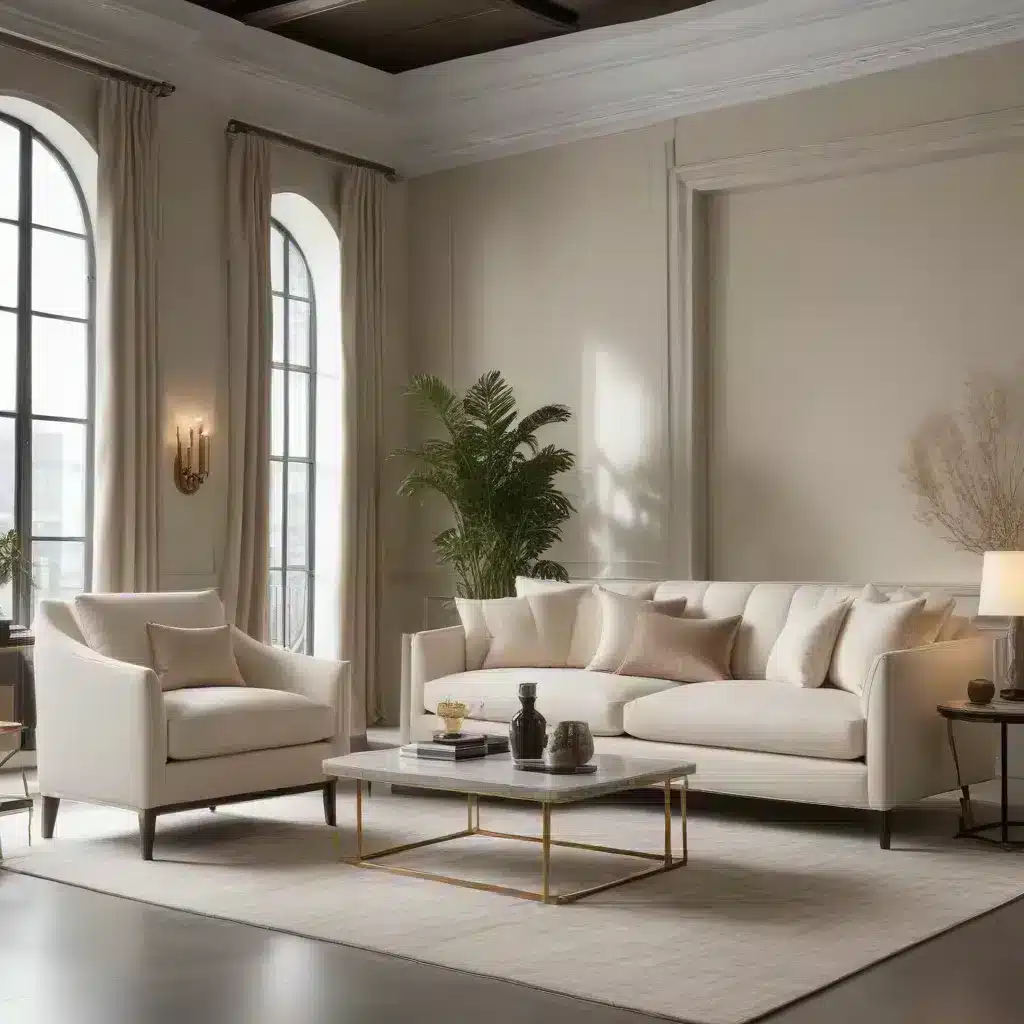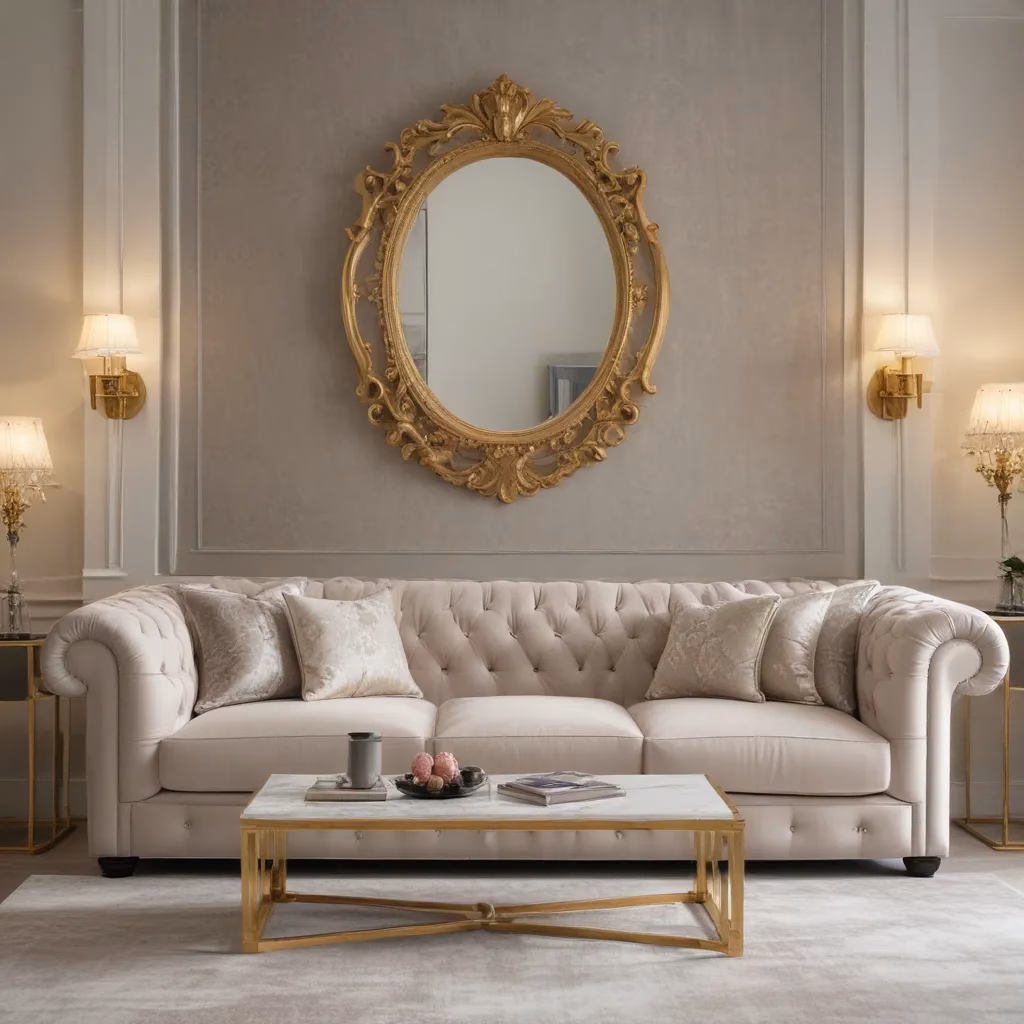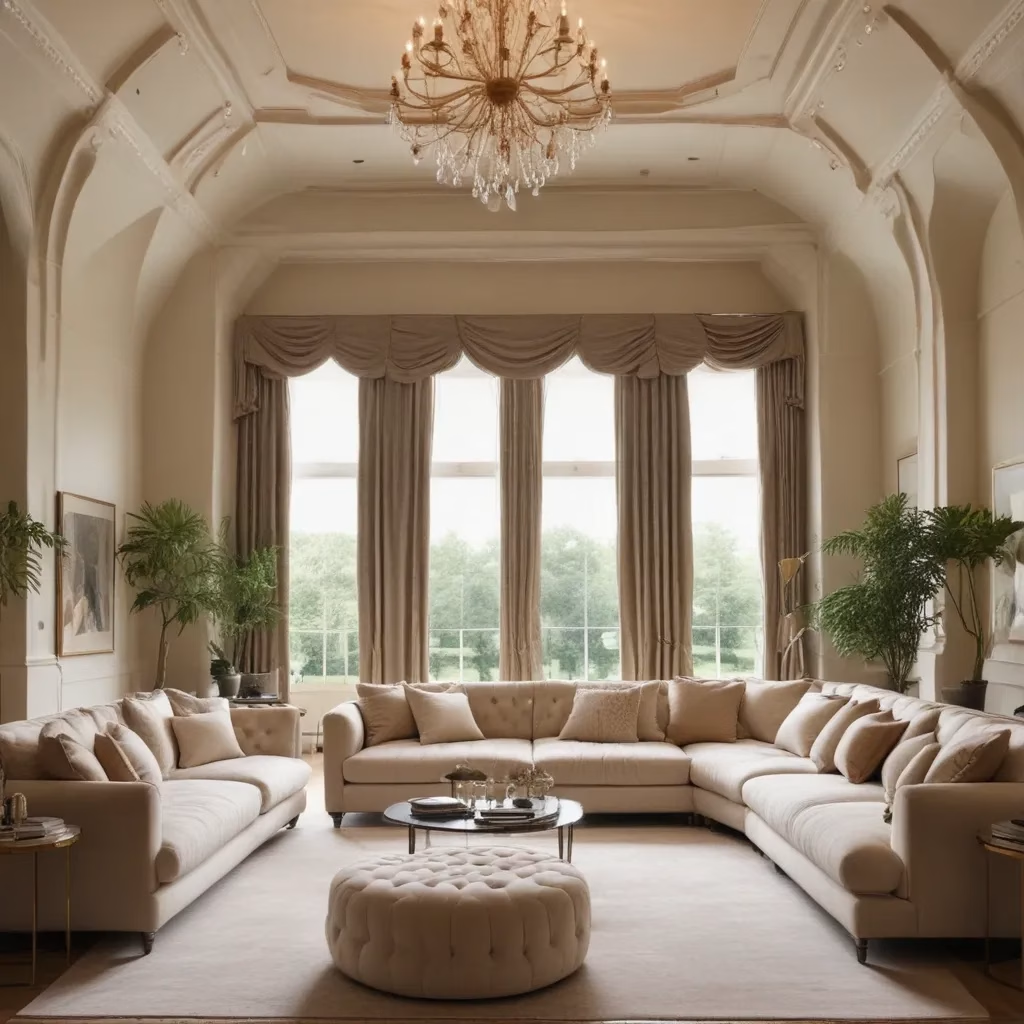
The Evolution of Sofa Design
As a furniture specialist with years of experience, I’ve witnessed firsthand the remarkable transformation in sofa design over the past decade. The modern sofa is no longer just a place to sit; it’s become a statement piece that reflects our lifestyle, values, and the ever-changing dynamics of our homes.
In recent years, we’ve seen a shift towards modular and multifunctional sofas. These innovative designs cater to the flexibility demanded by contemporary living spaces. Homeowners now seek furniture that can adapt to various situations, from intimate family gatherings to larger social events. I’ve helped numerous clients select sectional sofas that can be easily reconfigured, allowing them to maximize their space efficiency without compromising on style or comfort.
Another trend that’s gained significant traction is the integration of technology into sofa design. It’s not uncommon now to find sofas with built-in USB ports, wireless charging pads, and even smart fabric that resists stains and odors. As someone who’s always been fascinated by the intersection of comfort and technology, I find these advancements particularly exciting. They represent a new era in furniture design where functionality meets cutting-edge innovation.
Choosing the Right Upholstery: A Blend of Style and Practicality
Selecting the perfect upholstery for your sofa is crucial, and it’s a topic I’m particularly passionate about. The right fabric can make or break the look and longevity of your sofa. Over the years, I’ve guided countless clients through this decision-making process, and I’ve learned that it’s about striking the perfect balance between aesthetics and practicality.
Performance fabrics have revolutionized the upholstery industry. These materials are engineered to withstand the rigors of daily life while maintaining their luxurious appearance. I often recommend these to families with young children or pets. The ability to easily clean spills and resist wear and tear has made performance fabrics a game-changer in sofa design.
For those seeking a more traditional look, natural fibers like linen and cotton remain popular choices. These materials offer breathability and a timeless appeal. However, it’s important to note that they may require more maintenance compared to synthetic alternatives. I always advise my clients to consider their lifestyle and maintenance preferences when making this decision.
Leather upholstery continues to be a favorite among many of my clients. Its durability and the way it ages gracefully make it an excellent investment. I’ve seen leather sofas that look even better after years of use, developing a rich patina that adds character to the piece.
The Art of Sofa Placement: Maximizing Your Living Space
One of the most common questions I receive from clients is about optimal sofa placement. The way you position your sofa can dramatically impact the flow and feel of your living space. It’s an art that combines principles of interior design with practical considerations.
In smaller spaces, I often recommend placing the sofa against the longest wall. This arrangement helps to create a sense of openness and allows for better traffic flow. For larger rooms, floating the sofa away from the walls can create intimate seating areas and add depth to the space.
Another tip I frequently share is to consider the natural light sources in your room when placing your sofa. Positioning it perpendicular to windows can help reduce glare on screens and create a comfortable seating area for reading or conversation.
For open-plan living areas, sofas can serve as excellent room dividers. I’ve worked with clients to use L-shaped sectionals or back-to-back sofas to define separate zones within a larger space, effectively creating distinct areas for relaxation and entertainment.
Sofa Maintenance: Preserving Your Investment
As someone who’s passionate about furniture care, I can’t stress enough the importance of proper sofa maintenance. A well-maintained sofa not only looks better but also lasts longer, providing you with years of comfort and enjoyment.
Regular vacuuming is the foundation of good sofa care. I recommend using the upholstery attachment of your vacuum cleaner at least once a week to remove dust and debris. For fabric sofas, rotating the cushions periodically helps ensure even wear and prolongs the life of the upholstery.
When it comes to cleaning spills, quick action is key. Blot (don’t rub!) the spill immediately with a clean, white cloth. For more stubborn stains, I always advise checking the manufacturer’s cleaning instructions before attempting any treatments. Some fabrics may require professional cleaning to avoid damage.
For leather sofas, conditioning is essential to keep the material supple and prevent cracking. I suggest using a high-quality leather conditioner every 6-12 months, depending on the sofa’s exposure to sunlight and heat.
Sustainable Sofa Options: Eco-Friendly Choices for Conscious Consumers
In recent years, I’ve noticed a growing interest in sustainable furniture options among my clients. The furniture industry has responded to this demand with innovative, eco-friendly sofa designs that don’t compromise on style or comfort.
One exciting development is the use of recycled and upcycled materials in sofa construction. I’ve seen beautiful sofas made with frames from reclaimed wood and cushions filled with recycled plastic bottles. These pieces not only reduce waste but often have unique character and charm.
Organic upholstery fabrics are another area where sustainability meets luxury. Natural fibers like organic cotton, hemp, and wool are becoming more popular. These materials are grown without harmful pesticides and are often more durable than their conventional counterparts.
Some manufacturers are also focusing on end-of-life considerations for their sofas. This includes designing pieces that can be easily disassembled for recycling or using biodegradable materials. I find this holistic approach to sustainability particularly promising for the future of furniture design.
The Psychology of Color in Sofa Selection
As a furniture specialist, I’ve always been fascinated by the psychological impact of color in interior design, particularly when it comes to sofas. The color of your sofa can significantly influence the mood and atmosphere of your living space.
Neutral tones like beige, gray, and taupe remain popular choices for sofas. These colors provide a versatile backdrop that can easily adapt to changing design trends. I often recommend neutral sofas to clients who like to experiment with different color schemes in their decor, as they offer maximum flexibility.
For those looking to make a bold statement, jewel tones like emerald green, sapphire blue, or deep purple can add drama and sophistication to a room. I’ve helped clients transform their living spaces with vibrantly colored sofas that serve as stunning focal points.
Pastel shades have also gained popularity in recent years. Soft pinks, light blues, and mint greens can create a calming, serene atmosphere. These colors work particularly well in smaller spaces, as they can help make a room feel more open and airy.
When advising clients on color selection, I always encourage them to consider the existing color palette in their home and how the sofa will interact with other elements in the room. It’s about creating a cohesive look that reflects their personal style and enhances their living environment.
The Rise of Custom Sofas: Tailoring Comfort to Individual Needs
In my experience, one of the most exciting trends in the furniture industry is the growing popularity of custom sofas. This shift towards personalization allows homeowners to create pieces that perfectly fit their space, style, and comfort preferences.
Custom sofas offer the opportunity to choose every aspect of the design, from the frame style and dimensions to the filling type and upholstery fabric. I’ve worked with clients to create unique pieces that solve specific challenges in their living spaces, such as oddly shaped rooms or the need for extra storage.
One of the key advantages of custom sofas is the ability to specify the seat depth and cushion firmness. This level of customization ensures optimal comfort for individuals of different heights and with varying seating preferences. I’ve seen how this personalized approach can significantly enhance the daily living experience of my clients.
Custom sofas also allow for greater creativity in design. I’ve helped clients incorporate unexpected elements into their sofas, such as contrasting piping, unique button tufting patterns, or even built-in side tables. These bespoke touches can elevate a sofa from a simple seating option to a true work of art.
While custom pieces often come with a higher price tag, I’ve found that many clients view them as worthwhile investments. A well-made custom sofa can last for decades, adapting to changing decor styles through reupholstering.
The Impact of Global Design Influences on Sofa Trends
As someone who closely follows furniture design trends, I’ve observed how global influences have significantly shaped sofa styles in recent years. The interconnectedness of our world has led to a beautiful fusion of design elements from various cultures, resulting in unique and eclectic sofa designs.
Scandinavian minimalism continues to have a strong impact on sofa design. Clean lines, light woods, and muted colors characteristic of this style have found their way into many contemporary sofa designs. I’ve noticed an increasing number of clients drawn to the simplicity and functionality of Scandinavian-inspired pieces.
On the other hand, the richness of Middle Eastern design has influenced a trend towards more opulent sofas. Plush fabrics, intricate patterns, and deep, saturated colors reminiscent of Moroccan interiors have gained popularity. I’ve helped clients incorporate these elements to add a touch of exotic luxury to their living spaces.
Japanese-inspired designs have also made their mark on sofa trends. The emphasis on natural materials, low profiles, and modular configurations aligns well with contemporary living needs. I’ve seen a growing appreciation for the zen-like simplicity and versatility of these designs among my clients.
Innovative Materials in Sofa Construction
The world of sofa construction has seen remarkable advancements in materials, leading to furniture that’s more durable, comfortable, and sustainable than ever before. As someone who’s passionate about the technical aspects of furniture design, I find these innovations particularly exciting.
Memory foam has revolutionized sofa comfort. Originally developed for NASA, this material now finds its way into high-end sofas, providing unparalleled support and pressure relief. I’ve had clients describe sitting on a memory foam sofa as feeling like they’re being “gently hugged” by their furniture.
Phase-changing materials (PCMs) are another exciting development. These materials can absorb, store, and release heat, helping to regulate temperature and keep you comfortable regardless of the ambient conditions. I’ve recommended PCM-infused upholstery to clients who struggle with temperature regulation, and the feedback has been overwhelmingly positive.
3D-printed components are starting to make their way into sofa construction. This technology allows for complex, organic shapes that would be difficult or impossible to achieve with traditional manufacturing methods. While still in its early stages, I believe 3D printing has the potential to revolutionize furniture design, allowing for unprecedented levels of customization and creativity.
Recycled ocean plastics are being used to create durable, eco-friendly upholstery fabrics. I’ve seen beautiful sofas upholstered in materials made from reclaimed fishing nets and other ocean waste. This innovation not only helps clean our oceans but also creates a unique story behind each piece of furniture.
The Future of Sofa Design: Anticipating Tomorrow’s Trends
As we look towards the future of sofa design, I see several exciting trends on the horizon that will shape the way we think about and interact with our furniture.
Smart sofas are likely to become more prevalent. Imagine a sofa that can adjust its firmness based on your preferences, or one that can warm up on a cold day. I anticipate we’ll see more integration of technology into our seating, enhancing both comfort and functionality.
Biophilic design principles are increasingly influencing furniture design. This approach seeks to connect occupants more closely to nature. In sofa design, this might manifest as increased use of natural materials, organic shapes, or even the integration of plant life into seating structures. I’m excited to see how designers will balance this trend with the practicalities of everyday use.
Adaptable, shape-shifting sofas could become more common as our living spaces continue to evolve. With more people working from home and living in smaller spaces, furniture that can transform to serve multiple functions will be in high demand. I can envision sofas that easily convert from seating to workspace to sleeping area.
Virtual reality (VR) in the design process is another area I’m watching closely. VR technology could allow clients to visualize and “test” different sofa designs in their space before making a purchase. This could revolutionize the way we shop for furniture, making it easier to find the perfect piece for any room.
As we wrap up this exploration of sofa trends and innovations, I’m reminded of why I love working in this industry. The sofa is so much more than just a piece of furniture; it’s the heart of our living spaces, where we relax, connect with loved ones, and create memories. The continuous evolution in sofa design reflects our changing lifestyles and values, always striving to enhance our comfort and well-being.
Whether you’re in the market for a new sofa or simply interested in staying abreast of furniture trends, I hope this article has provided valuable insights. Remember, the perfect sofa is out there for everyone – it’s just a matter of finding the right balance of style, comfort, and functionality for your unique needs.
For more information on selecting the perfect sofa for your home, visit Sofa Spectacular. Our team of experts is always ready to help you navigate the exciting world of sofa design and find the perfect piece to elevate your living space.



